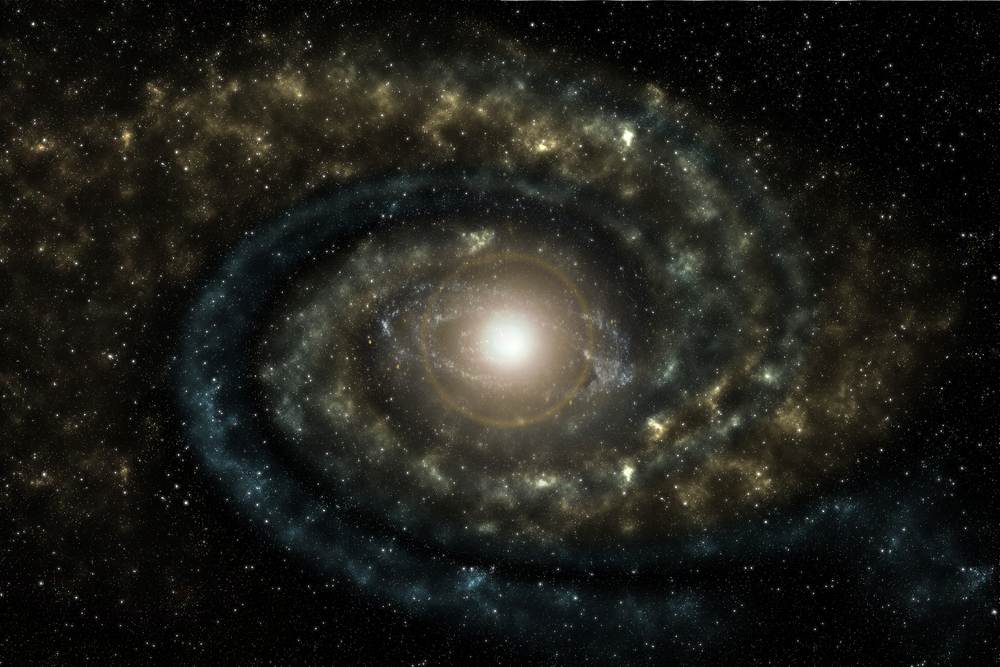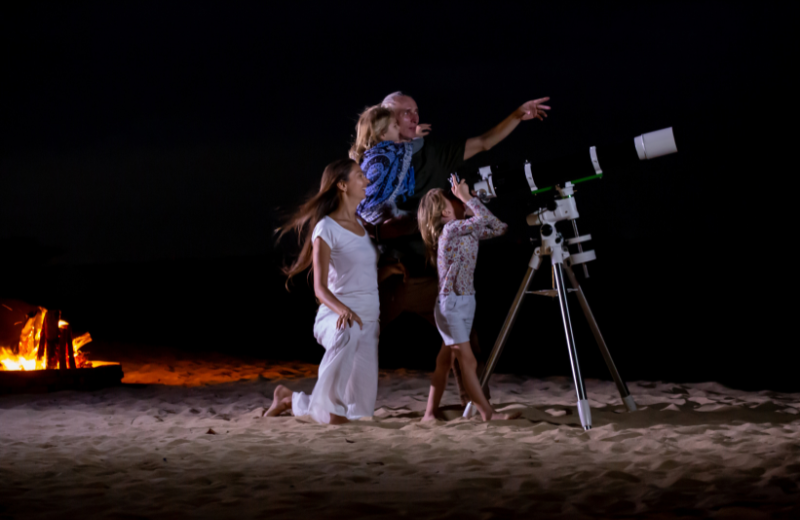Andromeda is a fascinating constellation rich in history that’s worth exploring. Whether you’re a stargazer looking to enhance your understanding or just curious about the myths and science behind the stars, this guide to the Andromeda constellation and its stars will take you through everything you need to know.
Jump to:
- What is the Andromeda Constellation?
- What Does the Constellation Andromeda Represent?
- What Does Andromeda Look Like?
- How Far is the Andromeda Constellation from Earth?
- The Andromeda Constellation Myth
- Andromeda's Stars
- Nebulae in the Andromeda Constellation
- Finding Andromeda in the Sky
- Fun Facts About Andromeda
- Study Astronomy for £29
Recommended for you!
Best SellersWhat is the Andromeda Constellation?
The Andromeda constellation is named after a character in Greek mythology—Andromeda, the daughter of King Cepheus and Queen Cassiopeia. It is a striking constellation in the northern hemisphere, visible from autumn to winter, and is known for its rich history and connection to one of the most prominent galaxies, the Andromeda Galaxy.
Andromeda is one of the 88 modern constellations and was catalogued by the Greek astronomer Ptolemy in the 2nd century. The constellation is part of the Perseus family of constellations and shares a close relationship with other famous constellations, such as Cassiopeia and Perseus.
What Does the Constellation Andromeda Represent?
In Greek mythology, the constellation represents Princess Andromeda, who was chained to a rock as a sacrifice to appease a sea monster sent by Poseidon. According to the myth, she was saved by the hero Perseus, and their story is immortalised in the night sky. The stars of the Andromeda constellation symbolise strength, sacrifice, and rescue.
What Does Andromeda Look Like?

The Andromeda constellation forms a long, stretched-out shape that can be tricky to spot for beginners. The constellation is best recognised by three bright stars that form a line, with its brightest star, Alpheratz (or Sirrah), marking the head of Andromeda. Two other stars, Mirach and Almach, help create the body of the constellation. Though it doesn’t form a clear shape like some other constellations, Andromeda’s connection to mythology gives it a special place in the sky.
How Far is the Andromeda Constellation from Earth?
While the stars in the constellation are all different distances from Earth, the famous Andromeda Galaxy (M31) is approximately 2.5 million light years away. This makes it the closest spiral galaxy to our own Milky Way. The constellation itself spans about 722 square degrees, making it the 19th largest constellation in the sky.
The Andromeda Constellation Myth

The myth of Andromeda comes from a story in Greek mythology. Andromeda’s mother, Cassiopeia, boasted about her beauty, claiming she was more beautiful than the sea nymphs. This angered the god Poseidon, who sent a sea monster to ravage their land.
Andromeda was offered as a sacrifice to calm the monster, but she was saved by Perseus, who had just defeated the Gorgon Medusa. After her rescue, Andromeda and Perseus married, and the gods placed Andromeda in the sky as a constellation. This ancient myth explains the connection between the constellations of Andromeda, Cassiopeia, Perseus, and Cetus (the sea monster).
Andromeda's Stars
The constellation Andromeda contains several stars, but three stand out:
- Alpheratz (Sirrah): The brightest star in Andromeda, located at the head of the constellation. It is a binary star, about 97 light years from Earth, and is shared with the neighbouring constellation Pegasus.
- Mirach: The second brightest star, located in the centre of Andromeda’s body. Mirach is a red giant star and lies approximately 200 light years away.
- Almach: A beautiful double star at the foot of Andromeda. Almach’s two components create a striking colour contrast, with one star being golden-yellow and the other blue. This star system is about 350 light years away from Earth.
Nebulae in the Andromeda Constellation
The Andromeda constellation is home to several fascinating deep-sky objects, the most famous being the Andromeda Galaxy (M31). This spiral galaxy is the largest in our local group and contains about one trillion stars. The Andromeda Galaxy is so vast that, if it were more luminous, it would appear six times larger than the full moon in the night sky. Other notable objects include M32 and M110, which are small elliptical galaxies orbiting the Andromeda Galaxy.
Finding Andromeda in the Sky

To catch a clear view of the Andromeda constellation, aim to stargaze in the northern hemisphere during the months from late summer through early winter, especially between September and December. During this time, Andromeda reaches its highest point in the sky, making it easier to spot.
Locating Andromeda
Begin by finding the nearby constellation Cassiopeia, which is well known for its distinctive "W" shape. Once you’ve identified Cassiopeia, use its position as a guide to trace a line towards Andromeda’s three main stars: Alpheratz, Mirach, and Almach. These stars help form the body of the constellation, and you’ll find them stretching outwards from Cassiopeia. In areas with dark skies, the Andromeda Galaxy, located just below the stars of the constellation, appears as a faint, fuzzy patch.
If you’re having trouble locating Andromeda, a star map or stargazing app can be a great help. These tools will align with the night sky above you, making it easier to navigate and spot the constellation’s stars, even if light pollution is present.
Viewing Andromeda with Binoculars or a Telescope
- With binoculars: Andromeda’s stars may be challenging to spot with the naked eye, especially in areas with light pollution, but a pair of binoculars can make it easier to trace the constellation's shape and see the Andromeda Galaxy more clearly.
- With a telescope: Using a telescope, you’ll get a much more detailed view of the Andromeda Galaxy. Even with an amateur telescope, this distant galaxy offers a spectacular sight and is a must-see for anyone interested in astronomy.
Best Viewing Conditions
For the best experience, find a dark location away from city lights. A moonless night is ideal, as this will allow you to appreciate both the Andromeda constellation and the galaxy’s delicate glow in the night sky. Once you spot Andromeda, you’ll find it truly mesmerising!
Recommended for you!
Best SellersFun Facts About Andromeda
- A Galaxy Collision: The Andromeda Galaxy is on a collision course with our Milky Way. Don’t worry, though—it won’t happen for another 4.5 billion years! When they collide, they will likely merge into a new, larger galaxy.
- Visible to the Naked Eye: The Andromeda Galaxy is one of the few objects outside our Milky Way that can be seen without a telescope, but you’ll need dark skies away from city lights to catch a glimpse.
- Galactic Neighbour: Andromeda and the Milky Way are the two largest galaxies in our local group. Despite being 2.5 million light years away, the Andromeda Galaxy is our nearest spiral galaxy neighbour.
Study Astronomy for £29
If the Andromeda constellation has sparked your curiosity, why not explore more about the stars and the cosmos with our Astronomy Diploma Course at Centre of Excellence? This course offers you a detailed understanding of the universe, from constellations and star types to the fundamentals of space observation. Perfect for all budding astronomers, the course is available for a discounted price of £29.













